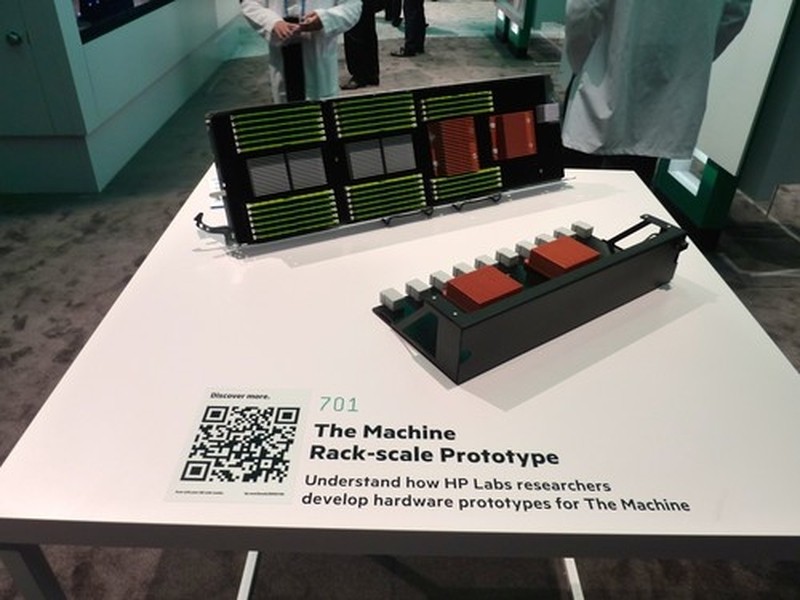HP is months away from splitting into two separate companies, and with it, the newly independent Hewlett-Packard Enterprise is placing a huge bet on a new type of memory-driven computing architecture that's faster and more efficient than anything available today. Simply dubbed "The Machine", it will supposedly enable a system the size of a refrigerator to do the work of a whole data center.
While the memristor technology enabling this breakthrough is still half a decade away, the company says it will have a DRAM-based prototype Machine ready next year for partners to start developing software.
The single-rack prototype will have 2,500 CPU cores and 320TB of main memory. It won't be nearly as powerful and efficient as the real deal – HP will have to keep all DRAM powered up so that the data stored in it won't be lost, while memristors retain data when the power is switched off – and it won't use other futuristic tech like silicon photonics to replace copper wiring. But it will allow developers to start thinking about how to transfer over existing workloads as well as new and more interesting applications not possible today.
Unlike current server architectures, where the CPUs lie at the center, with multiple layers of memory and storage attached, The Machine combines the latter two into one. These pools of what HP calls "universal memory" become central to how the system works and you attach everything else to it – CPU cores, GPUs, network interfaces, specialized processing units, and more.

Image credit: IDG
Having that much data in memory will theoretically allow The Machine to tackle workloads that are infeasible today or require huge infrastructure.
While the technology is meant for enterprise applications, if HP delivers on its memristor promise as the basis of computing in the years to come, the thinking is that it will eventually trickle down to personal computing devices. Basically the next leap forward in computing in the industry's evolution from mainframes to personal computers and cloud powered services.

According to Martin Fink, HP's chief technology officer, devices that now rely on cloud computing for some of their functionality could become self-contained, capable of memory-intensive things like voice recognition and language translation without calling on external computers.
The jury is still out on whether HP can pull it off and the time frame in which it can deliver. Memristors have been talked about since the 1970s and only in 2008 HP was able to prove they could be built. Word is HP's manufacturing yields for memristor chips still haven't exceeded 15 percent.
The company is also exploring phase change memory and resistive RAM as potential alternatives for non-volatile memory technologies for the Machine.